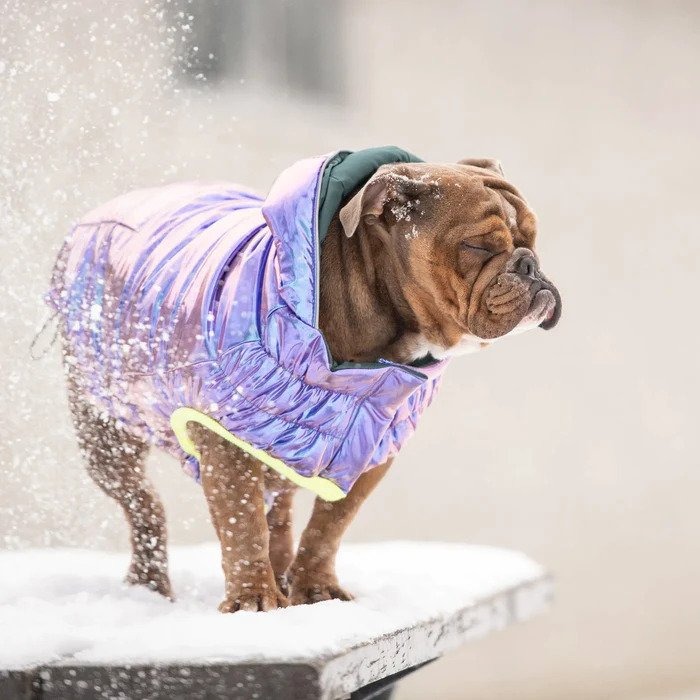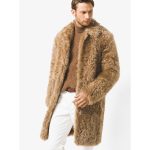Why Your Dog May Need a Coat in Winter
Winter can be tough on dogs, just as it is for humans. Dogs may need an extra layer of protection when the temperature drops. Here’s why a dog coat is not just a fashion statement but a necessity for some pooches during the colder months:
- Temperature Regulation: Not all dogs have thick fur suited for cold weather. Short-haired breeds, elderly dogs, and puppies might struggle to maintain their body heat.
- Comfort and Protection: A dog coat provides comfort and safeguards against frostbite, especially during long walks.
- Health Concerns: Dogs with health issues, such as arthritis, can benefit from the added warmth a coat provides, as cold weather can exacerbate their condition.
- Skin Protection: Coats can protect a dog’s skin from the harsh winter elements, like snow and ice.
- Visibility: For safety during dark winter walks, coats often have reflective material which makes dogs more visible.
Choosing the right dog coat involves several factors like material, size, and comfort. In the coming sections, we’ll discuss how to select the perfect coat to ensure your dog stays warm and happy in the winter chill.
Factors to Consider When Choosing a Dog Coat

When selecting a dog coat, there are key factors to keep in mind to ensure your pet’s comfort and safety.
Material and Insulation
The material of the dog coat matters as much as the style. Look for materials that offer warmth and are also breathable to prevent overheating. Insulation is critical for keeping your pet warm. Fleece or padded layers provide excellent insulation. Some dog coats come with special linings that reflect body heat, enhancing warmth without extra bulk.
Size and Fit
A coat should fit your dog comfortably, allowing freedom of movement without being too snug or too loose. A poorly fitted coat can cause discomfort or even injury. It’s essential to measure your dog accurately before buying a coat. Make sure the coat covers the dog’s back fully but does not restrict their ability to move, see, or relieve themselves.
Ease of Cleaning
Dog coats will get dirty, so ease of cleaning is a practical consideration. Coats that are machine washable are highly convenient. Look for materials that resist stains and dry quickly. Velcro or snap fastenings can make the coat easier to put on and take off but check that these do not irritate your dog’s skin or get caught on their fur.
Types of Dog Coats and Their Benefits

When it comes to dog coats, a one-size-fits-all approach doesn’t work. Different types of coats serve various purposes and offer unique benefits. Here’s a breakdown of the common types of dog coats and how they help your canine friend.
Standard Coats
Standard coats for dogs are like the everyday wear of the canine world. They are suitable for mild to moderately cold weather. These coats often feature simple designs with fleece or knit fabrics that provide warmth and comfort. They are ideal for indoor use or short trips outside. The main benefits of standard coats include:
- Warmth: They keep your dog warm during chilly days.
- Comfort: Soft materials ensure your dog is comfortable.
- Ease of Movement: These coats often allow for unrestricted movement.
Waterproof Coats
For those wet and snowy days, waterproof dog coats are the answer. Made with water-resistant materials, they prevent your dogs from getting soaked and cold. Features you might find in waterproof coats include:
- Dryness: Keeps your dog dry in rain or snow.
- Durability: Tough fabrics last longer, even with active dogs.
- Protection: Shields your dog’s skin and fur from moisture.
Make sure to choose breathable options to avoid trapping moisture against your dog’s skin.
Reflective Coats
Safety is critical during those early morning or late evening walks. Reflective dog coats have materials that shine when caught in the light, making your dog visible to drivers and others. Key benefits include:
- Visibility: Enhances your dog’s visibility in low light.
- Security: Adds an extra layer of safety during walks.
- Design: Often come with stylish and functional features.
These coats are a must-have for active dogs and owners who often go out when it’s dark.
How to Measure Your Dog for the Perfect Coat Fit
Ensuring a proper fit for your dog’s coat is crucial for comfort and warmth. Here’s a straightforward guide on how to measure your dog for a coat:
- Back Length: Measure from the base of the neck to the base of the tail. This determines the coat length.
- Chest Girth: Measure the widest part of your dog’s chest. This ensures the coat has enough room for movement.
- Neck Circumference: Measure around your dog’s neck where a collar would sit. Avoid making it too tight.
Remember to use a flexible tape measure and keep the measuring tape snug, but not tight, to capture the most accurate measurements. If your dog is in between sizes, choose the larger size to guarantee enough room for your dog to move freely. With these steps, you can find a dog coat that fits well, keeping your canine companion cozy and comfortable in the colder months.
Tips for Introducing Your Dog to Wearing a Coat
Introducing your dog to a coat may require patience and positive reinforcement. Here are some tips to make the process smoother:
- Start Early: If possible, introduce your dog to wearing a coat while they’re still a puppy. Puppies adapt quicker to new experiences.
- Choose the Right Time: Start during calm, quiet moments when your dog is relaxed.
- Keep Sessions Short: Begin with brief periods and gradually increase the time they wear the coat.
- Use Treats: Reward your dog with treats when they behave well with the coat on.
- Positive Association: Make the experience enjoyable. Associate the coat with walks, playtime, or cuddles.
- Ensure Comfort: Ensure the coat fits well and is comfortable. Avoid any that restrict your dog’s movement.
- Be Patient: Some dogs may take time to adjust to wearing a coat. Give them time and keep sessions positive.
Remember, a dog coat is for your pet’s warmth and protection. With the right approach, your dog will soon learn that a coat means it’s time for a fun, warm walk outside.
Essential Features to Look For in a Quality Dog Coat

When shopping for a dog coat, seek out several key features to ensure quality and functionality. A quality dog coat should offer more than just warmth; it should provide convenience for both the pet and the owner. Here are the essential features to look for:
Durability
Choose fabrics that withstand wear and tear. Rugged materials last through winter adventures without falling apart.
Water Resistance
A water-resistant coat keeps your dog dry. This is crucial for preventing chills and discomfort in wet conditions.
Comfortable Lining
A soft inner lining boosts comfort. It also helps prevent skin irritation and enhances warmth.
Secure Fastenings
Look for strong fasteners that hold the coat in place. They should be easy to use and withstand your dog’s movement.
Adjustable Fit
Adjustable straps or elastic bands allow for a snug fit. They accommodate growth or weight changes in your dog.
Easy to Clean
Find a coat that’s simple to wash. Machine-washable options save time and hassle.
Lightweight Design
A lightweight coat is easy for dogs to wear. It shouldn’t hinder their mobility or become a burden during play.
Reflective Elements
Reflective strips or patterns improve visibility. They ensure your dog’s safety during low-light conditions.
By focusing on these features, you can select a dog coat that is practical, durable, and comfortable. This makes winter walks enjoyable for your furry friend, no matter how cold it gets outside.
Handling the Cold: Additional Winter Care Tips for Dogs
Winter can be harsh for your furry friends. Besides finding the right dog coat, consider these extra tips to care for your dog in cold weather:
- Keep Them Active: Dogs need exercise, even when it’s cold. Short, more frequent walks can maintain their health.
- Check Their Paws: Inspect your dog’s paws for signs of cold-related damage like cracks or sores.
- Dry Them Off: Always dry your dog after they’ve been outside to prevent chills.
- Provide Shelter: If they spend time outdoors, ensure they have a warm, dry place to retreat.
- Monitor Food Intake: Dogs might need more food in the winter for energy to stay warm.
- Hydrate: Just like humans, dogs need plenty of water, even in winter, to stay hydrated and healthy.
- Avoid Salt and Antifreeze: These common winter chemicals can be toxic. Keep your dog away from areas where they are used.
- Care for Their Coat: Regular grooming helps their fur provide better insulation.
- Watch for Signs of Discomfort: If your dog shivers or seems anxious, it’s time to go inside.
By keeping these tips in mind, you’ll help your dog have a safe and comfortable winter season. Keep your bond strong and warm, even when the weather outside is frightful.


